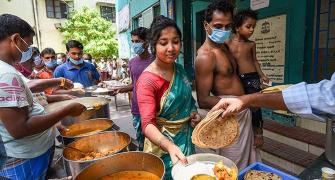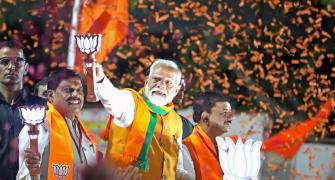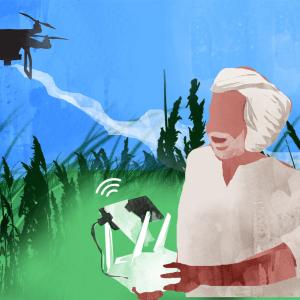The free food scheme is driven by electoral considerations, but its long-term fiscal risks outweigh short-term gains, cautions A K Bhattacharya.
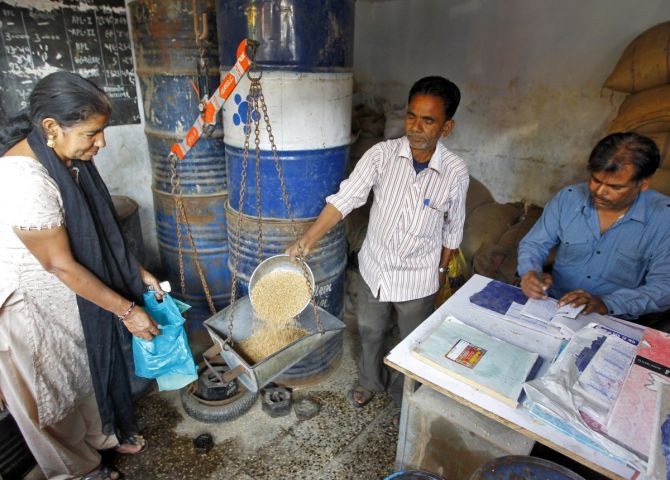
The Union government's decision to allow free food grain supplies under the National Food Security Act (NFSA) has come under attack for good reasons.
Instead of reducing the food subsidy bill by raising the central issue price of grain supplied to 810 million beneficiaries under the public distribution system (PDS), the government has made it free.
The principle of fiscal prudence has been undermined.
Worse, the move might also encourage political parties ruling in many states to embark on this perilous path of fiscal irresponsibility by rolling out other such schemes.
Make no mistake about it. With as many as nine state elections due to be held during 2023, the decision is guided principally by electoral considerations.
It appears that the festival of democracy will be celebrated by all political parties at the cost of fiscal prudence.
The fact that the original scheme to distribute five kilograms of free food grain to 810 million beneficiaries across the country under the Pradhan Mantri Garib Kalyan Anna Yojana (PM-GKAY) has been effectively discontinued is hardly any solace.
The NFSA has now become the free food scheme till December 2023, and the general elections scheduled to be held in May 2024 will likely see it extended by at least a few more months, if not made permanent.
The long-term consequences of what was done would, without doubt, be problematic for fiscal consolidation both at the Centre and in the states. But the decision would also result in two short-term gains for the Union finance ministry.
Against an estimated food subsidy bill of Rs 3.3 trillion in 2022-2023, the burden under this head in 2023-2024 would be substantially less at about Rs 2.15 trillion.
This could provide the finance ministry a food subsidy saving equivalent to about 0.4 per cent of GDP on the assumption that the Indian economy would record a nominal growth rate of 11 per cent next year.
Taken together with the fertiliser subsidy saving, estimated at about 0.3 per cent of GDP, the finance ministry will have a total additional cushion of about 0.7 per cent of GDP in 2023-2024, which would give it some flexibility in increasing capital expenditure.
A more substantive gain is the way the government has reduced the degree of uncertainty over its liability on account of food subsidy.
With the PM-GKAY gone, the government will now have to deal with the remaining challenge of resuming supplies of food grain under the NFSA at a price.
Given the political considerations in the run-up to the 2024 general elections, it is unlikely that supplies under the NFSA would be brought under the central issue price regime before the middle of 2024.
But unlike in the past few years, the finance ministry is now clear what its liability on account of food subsidy would be in the next couple of years.
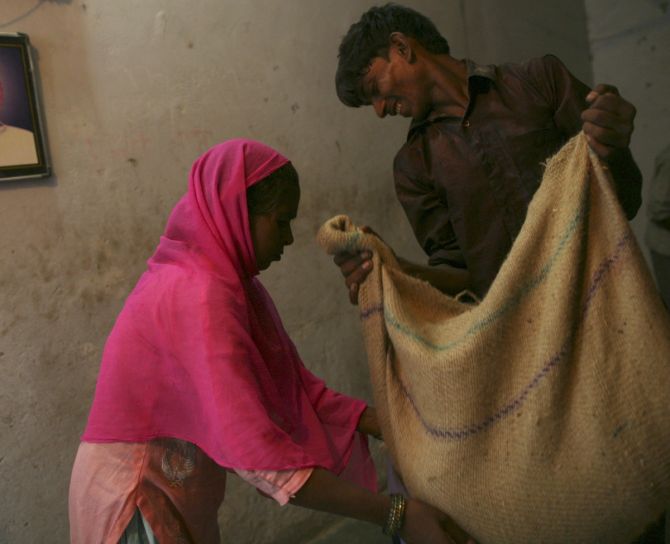
Ever since its launch in April 2020, the PM-GKAY did appear like a red rag for the Union finance ministry.
To be sure, the ministry was not opposed to the idea per se of providing free food grain to take care of the poor and vulnerable sections of society, who were adversely impacted by the pandemic.
Its reservations were primarily due to the way the scheme's announcement in the last year or so had upset its expenditure planning.
Soon after the lockdown was announced in March 2020, the government launched the PM-GKAY, initially for three months -- from April to June 2020. But the scheme was extended by another five months from July to November 2020.
As the second wave played havoc in early 2021, the government reintroduced the PM-GKAY, initially for two months from May to June 2021, and then extended it in two instalments till the end of March 2022.
The scheme was again extended for six months till September 2022 and by another three months till the end of December 2022.
In all these extensions and its reintroduction after a gap of five months, the finance ministry's expenditure planning took a major hit.
Its Budget for 2020-2021 had provided only Rs 1.16 trillion by way of food subsidy. This was understandable as the impact of the pandemic was not yet fully evident when the Budget was presented on February 1, 2020.
Not surprisingly, the actual food subsidy bill in 2020-2021 rose to Rs 5.41 trillion.
Of course, the huge slippage took place not just because of the impact of running the PM-GKAY for eight months, but also for clearing the past dues to the Food Corporation of India.
The Budget for 2021-2022, presented in February 2021, once again suffered on account of under-provisioning for food subsidy.
Since there was no PM-GKAY in February 2021, the finance ministry projected the food subsidy estimate for 2021-2022 at Rs 2.43 trillion.
However, its actual expenditure under this head was higher at Rs 2.9 trillion for 2021-2022.
Similarly, in the Budget for 2022-2023, presented in February 2022, the finance ministry assumed that the PM-GKAY would come to an end by March 2022 and, therefore, projected a food subsidy burden of Rs 2.1 trillion for the full year. But the scheme was extended twice after the presentation of the Budget -- once in March 2022 by six months from April to September 2022 and again in September, from October to December 2022.
The expectation now is that the actual food subsidy bill in 2022-2023 would be about Rs 3.3 trillion.
The decision to subsume the PM-GKAY into the NFSA and make food grain supplies under PDS free for a year till December 2023 means that the finance ministry could now plan its expenditure with greater clarity about its liability on account of food subsidy for 2023-2024.
This is an advantage that the previous three Budgets did not enjoy as the government took decisions on the PM-GKAY after the Budget numbers were framed.
Expect, therefore, some realistic numbers on the government's food subsidy bill in the Budget for 2023-2024.
Hopefully, the next decision on the fate of the NFSA and the pricing of food grain supplied under it would also be taken well in time without contributing to any fresh uncertainty.
But there is little doubt that the free food scheme's long-term fiscal risks, not just for the Centre but also for the states, are more dangerous than the Union finance ministry's limited gains for 2023-2024.
Feature Presentation: Rajesh Alva/Rediff.com




